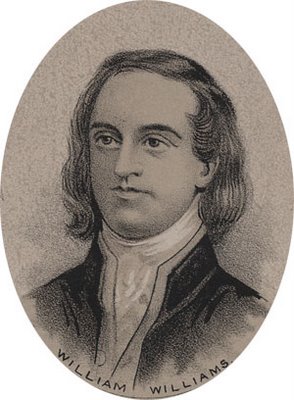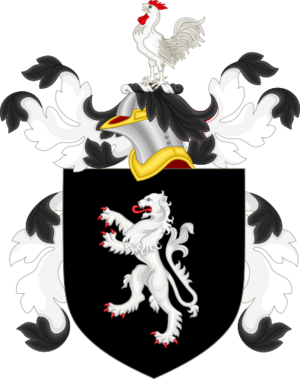William Williams (Connecticut politician) facts for kids
Quick facts for kids
William Williams
|
|
|---|---|
 |
|
| Born | April 8, 1731 |
| Died | August 2, 1811 (aged 80) |
| Resting place | Old Cemetery, Lebanon Connecticut. |
| Occupation | politician |
| Known for | signer of the United States of America Declaration of Independence |
| Spouse(s) | Mary Trumbull |
| Signature | |
William Williams (born April 8, 1731 – died August 2, 1811) was an important figure in early American history. He was one of the Founding Fathers and a successful merchant. Williams represented Connecticut in the Continental Congress in 1776. He is famous for signing the United States Declaration of Independence.
Contents
Early Life and Education
William Williams was born in Lebanon, Connecticut. His father, Solomon Williams, was a minister, and his mother was Mary Porter. William studied at Harvard and finished his studies in 1751. He first planned to become a minister, but then he joined the army. He fought in the French and Indian War. After the war, he opened his own store in Lebanon. He called his store The Williams Inc.
Family and Public Service
On February 14, 1771, William Williams married Mary Trumbull. She was 25 years old, and he was almost 40. Mary was the daughter of Jonathan Trumbull, who was the Royal Governor of Connecticut. Jonathan Trumbull later became the second speaker of the United States House of Representatives. William and Mary had three children: Solomon, Faith, and William Trumbull.
Fighting for American Rights
Williams was very active in the protests that led to the American Revolution. He was a member of the Sons of Liberty. This group worked to protect the rights of American colonists. He also served on Connecticut's Committee of Correspondence. These committees helped colonies communicate with each other. He was also part of the Council of Safety. This group helped organize defenses during the war.
Williams strongly supported agreements to stop importing British goods. These agreements were made in 1769. They were meant to protest the Townshend Acts. These acts placed taxes on goods like tea, glass, and paper. He was also against British soldiers occupying Boston.
Speaking Out Against the King
In 1774, the British passed the Coercive Acts. These laws were meant to punish Boston. William Williams wrote an angry letter to King George III. He published it in the Connecticut Gazette. In his letter, Williams criticized the King's unfair rule. He argued that the American colonies deserved to be treated fairly. He warned the King that his harsh actions would lead to rebellion.
Signing the Declaration of Independence
On July 11, 1776, William Williams was chosen to join the Continental Congress. He replaced another delegate, Oliver Wolcott. This was just after Connecticut officially heard about the vote for independence. Williams arrived in Congress on July 28. This was too late to vote for the Declaration of Independence. However, he still signed the official copy. He signed it as a representative for Connecticut.
After the Revolution
In January 1788, Williams represented Lebanon, Connecticut, at a special meeting. This meeting was held to decide if Connecticut would approve the new United States Constitution. Williams had some concerns about the earlier government structure. However, he voted to approve the Constitution. He did this even though some people in his area wanted him to vote against it. His main concern was a rule in the Constitution. This rule said that government officials did not need to pass a religious test.
William Williams was also a pastor at the First Congregational Church in Lebanon. He was a very religious person throughout his life. He was also a successful merchant. He died on August 2, 1811, and was buried in Lebanon's Old Cemetery.
His home in Lebanon, called the William Williams House, is still standing today. It is recognized as a U.S. National Historic Landmark.
See also


